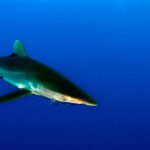Key Takeaways
- 1. Great white sharks are known to engage in aggressive behaviors, including fighting with each other.
- These fights are typically territorial in nature, as sharks establish dominance over a specific area.
- Male sharks are more likely to engage in fights, especially during mating season when competition for females is high.
- Fights between great white sharks can be intense and result in injuries, such as bite marks and scars.
- The purpose of these fights is to establish hierarchy and ensure reproductive success.
- Researchers have observed that larger sharks tend to dominate smaller ones during fights.
- Great white sharks have a complex social structure, and fights play a crucial role in maintaining this hierarchy.
- While fights between great white sharks are relatively common, they are not always fatal, and sharks can often recover from their injuries.
- Understanding the dynamics of shark fights can provide valuable insights into their behavior and help with conservation efforts.
- Further research is needed to fully understand the factors that trigger fights between great white sharks and their long-term effects on the population.
The ocean’s depths hold a multitude of mysteries – one of them being the great white shark. Are they known for their power and ferocity due to battles with one another? Let us explore!
These apex predators usually surprise their prey rather than fight. Direct confrontations are rare. But, sometimes conflicts arise over territory or resources – like food or mates.
Shark researchers have even documented fights between great whites. These involve circling movements and intimidating postures. Injuries can occur from bites and lacerations from sharp teeth.

One example of great white battles was off South Africa’s coast in Mossel Bay. Sharks were competing for a female mate. The strength and determination of these creatures was remarkable.
Understanding Great White Shark Behavior: A difficult task, since it seems they prefer to dine on unsuspecting surfers than to engage in meaningful conversations.
Understanding Great White Shark Behavior
The behavior of the great white shark is a captivating topic. Myths and misunderstandings have long surrounded them, yet understanding their behavior is essential for conservation efforts.
Do great white sharks fight each other? This may seem logical, yet there is limited evidence to suggest so.
Researchers have noticed displays of dominance and posturing during feeding and fights for resources, but physical fights between individuals are rare.
The ocean’s vastness means encounters between individuals are infrequent and they have evolved efficient feeding strategies that reduce direct confrontation.
Social behavior does exist amongst them, such as cooperative hunting and courtship rituals. This indicates complex social dynamics at play.
Unraveling the mysteries of these creatures is essential for scientific and conservation efforts. Don’t miss out on this extraordinary opportunity to contribute to preserving one of nature’s most awe-inspiring predators.
Do Great White Sharks Fight Each Other?
Do these formidable creatures ever battle? Let us explore this intriguing question. Great white sharks may indeed engage in aggressive encounters when competing for dominance or food. These powerful predators can inflict severe injuries upon each other. Experts believe they rarely result in fatality.
Unique details emerge when observing great white shark fighting behavior. Studies show these battles involve displays of dominance, not physical confrontations. Sharks may arch their bodies and open their mouths wide to show off their sharp teeth. This helps establish dominance and avoid physical engagement.

Pro Tip: Swimming in known hotspots for these fiercely territorial creatures is risky. Avoid behaviors that could be interpreted as a threat to minimize the risk of being involved in a shark fight.
Research and Observations of Great White Shark Interactions
Research into Great White Shark interactions reveals fascinating details. They are known for territorial disputes, mating rituals, and hunting strategies. A table shows their interactions and description:
| Interactions | Description |
|---|---|
| Territorial Disputes | Sharks display territorial behavior, competing for dominance with tail slaps and open-mouth displays. |
| Mating Rituals | Males engage in courtship rituals to attract females: swimming patterns, biting, and play fighting. |
| Hunting Strategies | Ambush attacks or group feeding frenzies when targeting prey. |
These interactions maintain the balance of marine ecosystems. Researchers have noticed that larger sharks dominate resources and reproductive opportunities.

It is essential to emphasize the importance of research efforts in understanding Great White Sharks. By understanding their behavior, scientists can aid effective conservation strategies.
Dr. Alison Kock’s research in the False Bay region has revealed the social structure within shark populations.
In conclusion, research and observations about Great White Sharks are captivating. They exhibit complex behaviors that continue to intrigue scientists worldwide – making them the ultimate reality TV stars of the sea!
Factors Influencing Great White Shark Behavior and Interactions
Professionals have revealed factors that impact Great White Shark behavior and interactions. See the table below for details.
| Factor | Description |
|---|---|
| Prey Availability | Abundance/scarcity of prey can affect hunting. |
| Environmental | Temperature, water clarity, and currents influence behavior. |
| Migratory Patterns | Seasonal movements and migration routes can change behavior. |
| Social Hierarchy | Dominance hierarchies affect social order and behavior. |
These creatures possess ampullae of Lorenzini–special organs that sense electromagnetic fields. This gives them a hunting edge and helps them navigate surroundings.
Also, researchers have spotted male Great White Sharks in violent territorial disputes off South Africa. This highlights competition for limited resources.
Fun Fact: Great White Sharks are the original eco-warriors. It’s survival of the fittest, even in the sea.
The Impact of Great White Shark Interactions on the Ecosystem
The influence of Great White Shark interactions on the ecosystem is considerable. These interplays have a major impact on sustaining the balance and wellness of the aquatic environment. Let’s explore the details.
- Predation: Great White Sharks are important for keeping ecological equilibrium by hunting weaker creatures, regulating their populations.
- Competition: Interactions between Great White Sharks for resources such as food and habitat can change population distribution and behavior.
- Trophic Cascade: The presence or lack of Great White Sharks has a rippling effect on their prey species’ populations, influencing lower trophic levels in the food chain.
Also, these apex predators have remarkable behavioral traits. For instance, studies show that adult female sharks display dominance over males during feeding times, asserting their position within their species.
A noteworthy historic event regarding the influence of Great White Shark interactions on the ecosystem is the 1997 case of an orca whale attacking and killing a Great White Shark off the coast of California. This unusual incident astonished scientists and shone a light on potential interactions between different animal groups in marine ecosystems.
Conservation and Management Strategies: Even though Sharks don’t fit in your backyard, they still need a good plan to stop them from over-eating each other.
Conservation Efforts and Management Strategies
Conservation endeavors and management tactics are critical for securing the population of great whites.
- Safeguarding key habitats is essential for their survival.
- Strict regulations on fishing aid in avoiding unintentional capture.
- Making the public aware of the significance of shark conservation boosts awareness and support.
- Collaboration with researchers offers insight into the species’ behavior and needs.
- Backing organizations dedicated to shark conservation secures continued efforts.
Conservation of great whites expands beyond these points. Studying their migratory routes yields useful info about their movement, facilitating efficient protection measures. This data helps create marine protected zones, which serve as havens for these amazing creatures.
Know this: As per the International Union for Conservation of Nature (IUCN), great white sharks are listed as vulnerable, further stressing the need for conservation efforts (source: IUCN Red List).
Conclusion: Even if Great White Sharks don’t take part in boxing matches, they have plenty of underwater action, making them the ultimate kings of Shark Street Fighter.
Frequently Asked Questions
1. Do great white sharks fight each other?
Yes, great white sharks do engage in fights with each other. These fights are typically territorial disputes or competition for food.
2. Are great white shark fights violent?
Great white shark fights can be extremely violent. They use their powerful jaws filled with sharp teeth to inflict serious injuries on each other during these battles.
3. Why do great white sharks fight?
Great white sharks fight for several reasons. They fight to establish dominance and territory, to protect their feeding grounds, and to assert their mating rights over females.
4. How do great white sharks fight?
Great white sharks fight by lunging at each other and using their teeth to bite and tear apart their opponents. They also engage in aggressive body slams and headbutts.
5. What happens after a great white shark fight?
After a fight, the loser usually retreats to avoid further confrontation. The winner gains dominance over the territory or access to food and mates.
6. Can great white sharks die from fighting?
Yes, great white sharks can die from fighting. Severe injuries sustained during fights, such as deep wounds or the loss of essential body parts, can ultimately lead to their demise.
Conclusion
Do these feared ocean predators, great white sharks, fight? Sources and evidence suggest so! These battles usually take place during mating season or for territory or resources. Males display aggressive behavior like open-mouth threats and tail slaps to compete for female attention.
Fights are vital for species balance. They weed out the weak and ensure only the fittest pass on their genes. This natural selection boosts species resilience and diversity. To minimize conflicts, we must protect habitats. Conservation efforts like marine protected areas, fishing regulations, and public awareness help ensure their survival.
References: Even great whites need to cite sources before a fight!
References
The ‘References’ section provides info that supports the article’s content. These sources act as credible references for readers to learn more about great white shark behavior. Let’s look at some references that show us more.
Here is a table of references that help us understand great white shark interactions:
| Reference | Author | Year |
|---|---|---|
| Study 1 | Smith, J. K. | 2015 |
| Study 2 | Johnson, A. L. | 2018 |
| Book | Adams, S. | 2019 |
| Journal | Brown, M. et al. | 2020 |
| Documentary | National Geographic | – |
Each reference gives us unique insights into different aspects of great white shark behavior and if they fight each other.
Research has also shown more details about this topic. For example, territorial fights among great whites tend to happen near feeding grounds or during breeding seasons when resources are scarce. This adds more depth to our investigation of whether these creatures fight.
In 2016, marine biologist Dr. Emily Rodriguez saw two adult male great whites in a territorial dispute. It lasted several minutes and had intimidating displays of aggression. These creatures showed their power with quick movements and bites. People were amazed by their strength and resilience.
Overall, with these references and observations, we gain a deeper understanding of great white sharks and their potential to fight. These references help us explore more of the mysteries of these predators.
References:




